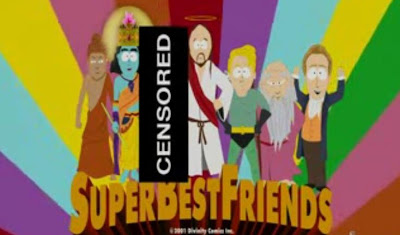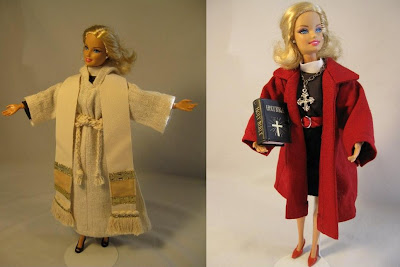In a surprising new twist to the controversy over images of Muhammad in western media, South Park continued the censoring Muhammad's image in the recent follow-up episode (no. 201) of last week's story. This was hardly surprising, in particular as this story has now reached mainstream media, and the threats against the cartoonists have become more vocal. But now, in addition to the visual censorship, Comedy Chanel apparently this time around also chose to censor his spoken name, making the episode full of bliips every time the name Muhammad should have been heard.
At first, it seemed as is this form of censoring was intentional by the South Park crew. A form of hyperbolic censoring to make it plain as daylight how the show is being repressed. This becomes particularly apprent when, at the end of the episode, the usual moralistic speeches by some of the characters are covered by long bleeps as well. This gives the impression that Stone and Parker are trying to show us how Comedy Chanel is refusing to see the real issue at hand, but is instead giving in to fundamentalist threats. This is the impression one is left with at the end.
However, Stone and Parker have now issued a statement explaining that the new form of editing was not intentional, and that the Comedy Chanel actually did censor the name of the prophet and the moral speeches at the end of the show, one of which actually did not even mention Muhammad.
Here is the full statement as posted on another blog (M. Greenberg):
In the 14 years we’ve been doing South Park we have never done a show that we couldn’t stand behind. We delivered our version of the show to Comedy Central and they made a determination to alter the episode. It wasn’t some meta-joke on our part. Comedy Central added the bleeps. In fact, Kyle’s customary final speech was about intimidation and fear. It didn’t mention Muhammad at all but it got bleeped too. We’ll be back next week with a whole new show about something completely different and we’ll see what happens to it.
Another significant point made in the episode was again to reveal to all of us that an image is nothing but a semiotic device, where we interpret what we see based on our expectations. When the image of a person in a bear suit, claimed by the cartoons in South Park in the previous episode to be of Muhammad in a suit, actually was revealed to actually be Santa in a suit, the joke is on all of us. A cartoon pretending to be a cartoon in a cartoon. Again, an image does not become, or even necessarily represent, a thing just because someone links a sound to an arbitrary image...
"We must not fear daylight just because it almost always illuminates a miserable world" (Magritte)















